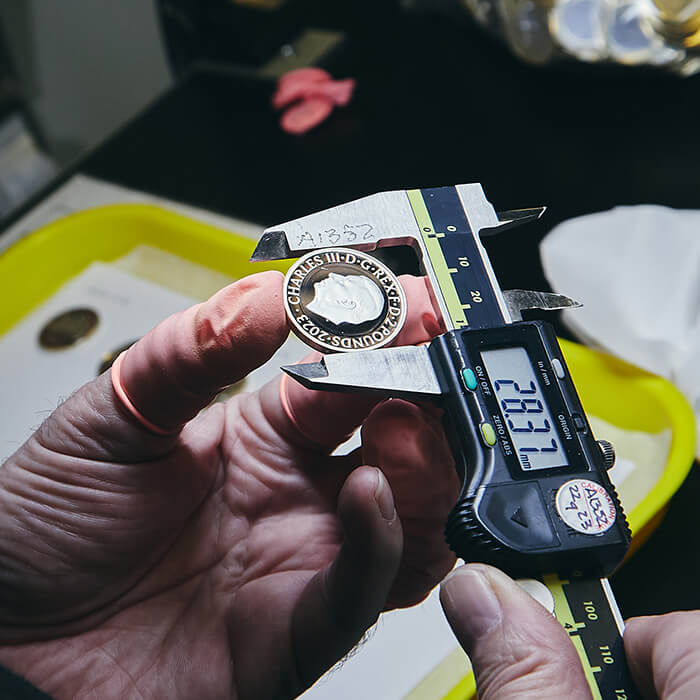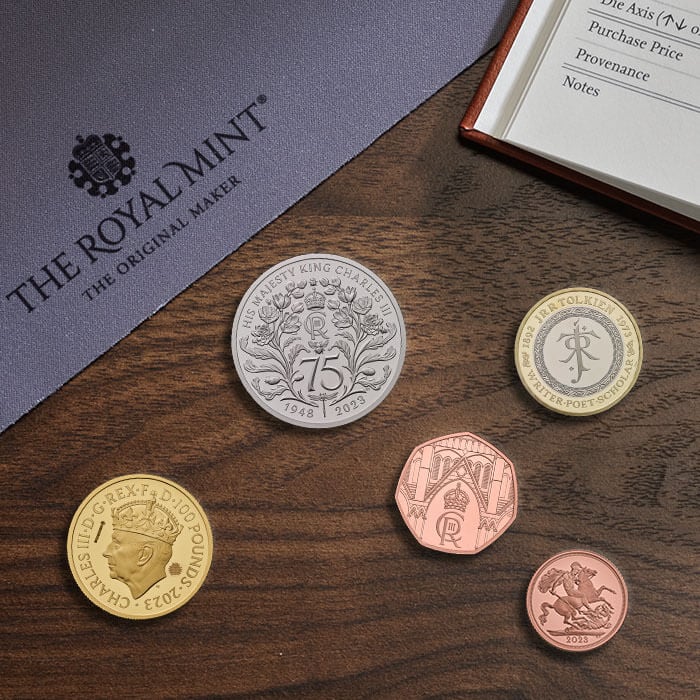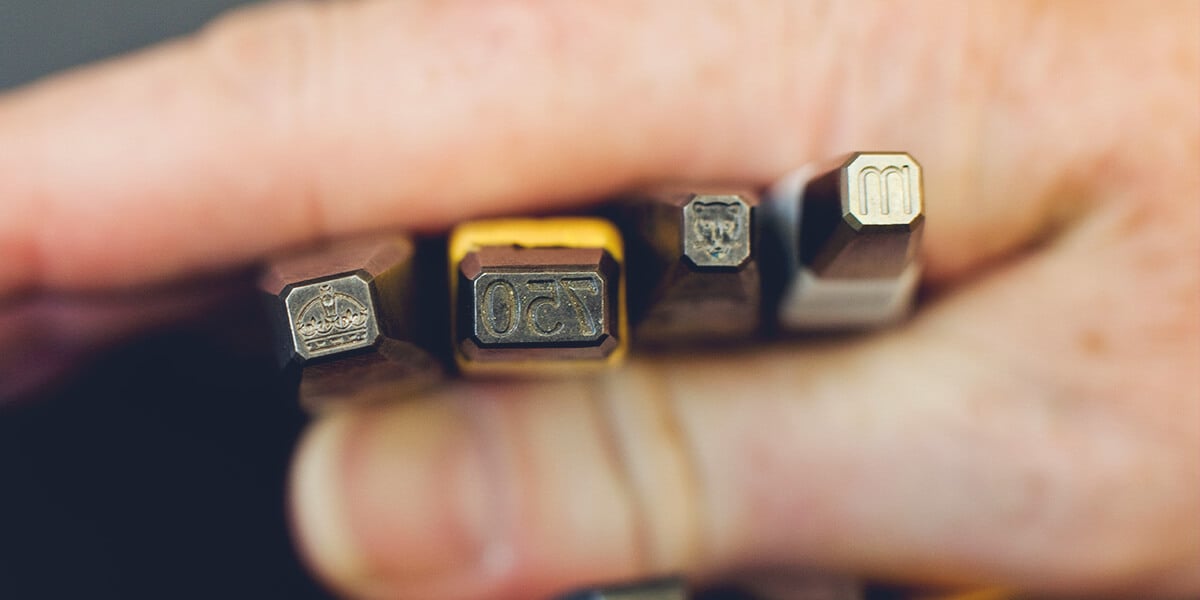
Hallmarks on Gold and Silver
Set in modern law through the Hallmarking Act of 1973, today it is a legal requirement that gold and palladium items weighing greater than one gramme, silver items weighing more than 7.78 grammes, and platinum items in excess of 0.5 grammes are hallmarked. Aiming to protect customers against fraud, hallmarking ensures that the content of items comprising precious metal(s) has been independently tested and verified.
There are several different marks included as part of the hallmarking process which can help to identify who sent the item for hallmarking, where the item was hallmarked, which precious metal has been used to make the item, and the fineness of the item. Typically, there is minimal space between markings, and a standard hallmark tends to appear in a horizontal line.
UK Hallmarks
Several different marks make up a standard hallmark. However, there are certain marks that are compulsory to include on the item. The three marks that must be included by law comprise the sponsor’s mark, the type of metal and purity mark, and the assay office mark.
The sponsor’s mark typically includes at least two letters and each one is unique. The type of metal and purity mark allows the buyer to identify easily which of the four precious metals have been used, as well as the fineness of the piece; the type of shield included around the number indicates which type of precious metal has been used. The assay office mark easily identifies where the hallmarking process was carried out. The classic leopard’s head is the town mark for London, an anchor is the town mark for Birmingham, a Yorkshire rose is the town mark for Sheffield, and a castle is the town mark for Edinburgh.
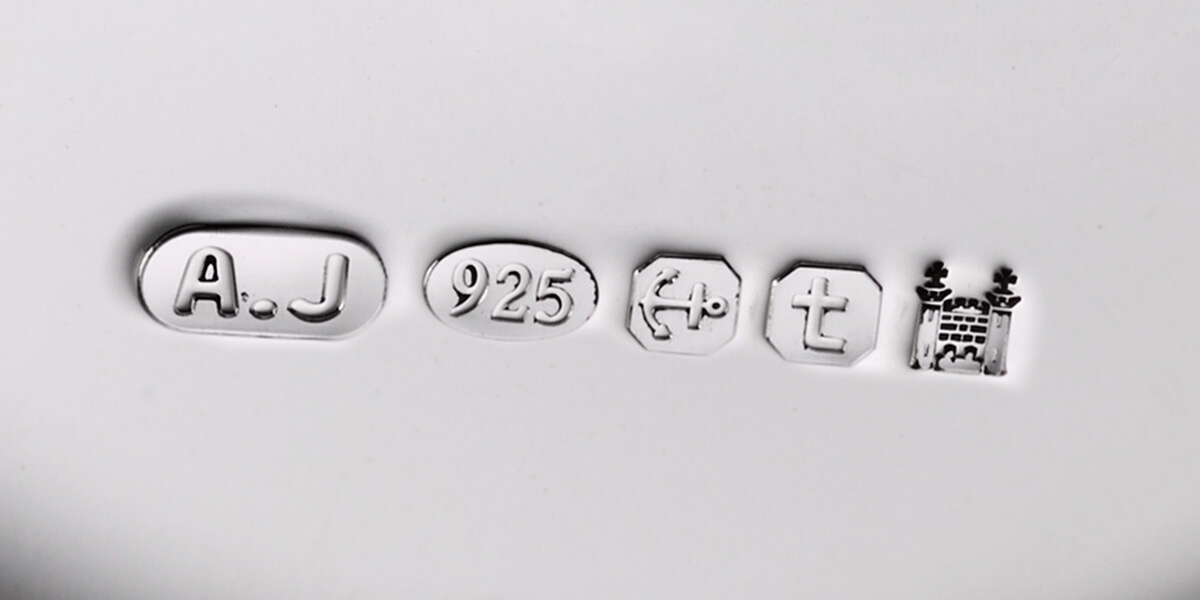
Optional Gold and Silver Hallmarks
Alongside these three compulsory hallmarks, optional marks can be included, for example, a date letter, traditional fineness symbol and commemorative marks. A date letter denotes which year the hallmarking of a piece took place – this letter changes every year on 1 January – and the shield surrounding it can also denote the year, so that each date mark is unique. Traditional fineness symbols feature a lion for sterling silver, Britannia for Britannia silver, a crown for gold, a Greek head for palladium and an orb for platinum.
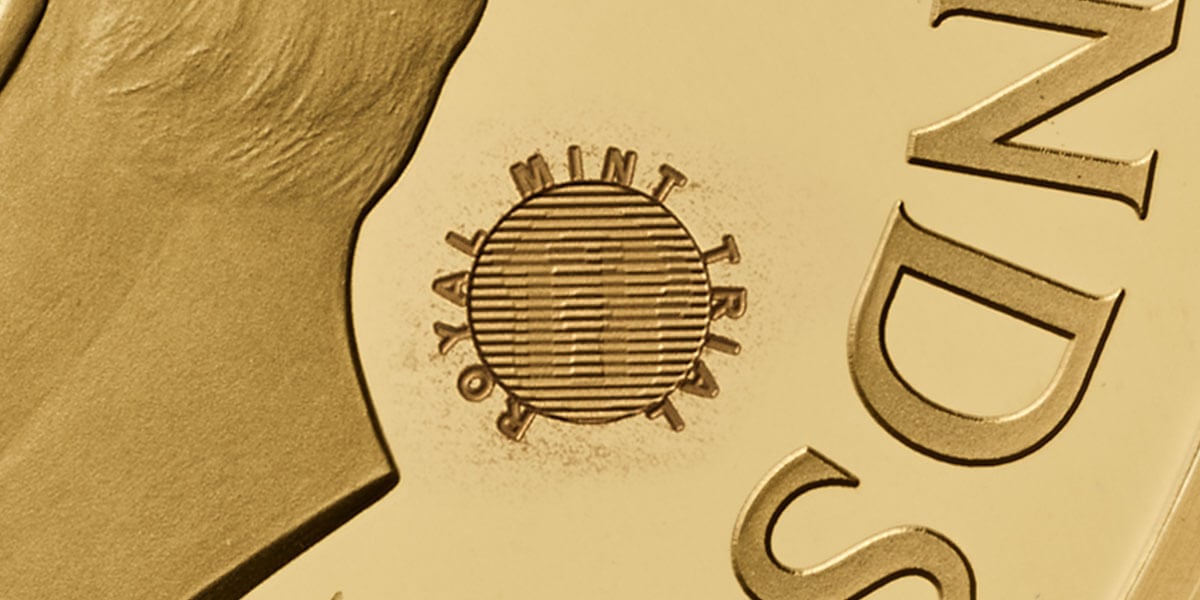
Commemorative marks are typically included for special occasions, such as Her Late Majesty Queen Elizabeth II’s Platinum Jubilee. The 2023 definitive UK coins featured a privy mark in the form of a Tudor Crown on the obverse, which forms part of His Majesty The King’s cypher.
This privy mark was included on commemorative issues as these were the first definitive coins of His Majesty’s reign. These types of marks are not compulsory but can add more significance to hallmarked pieces.






